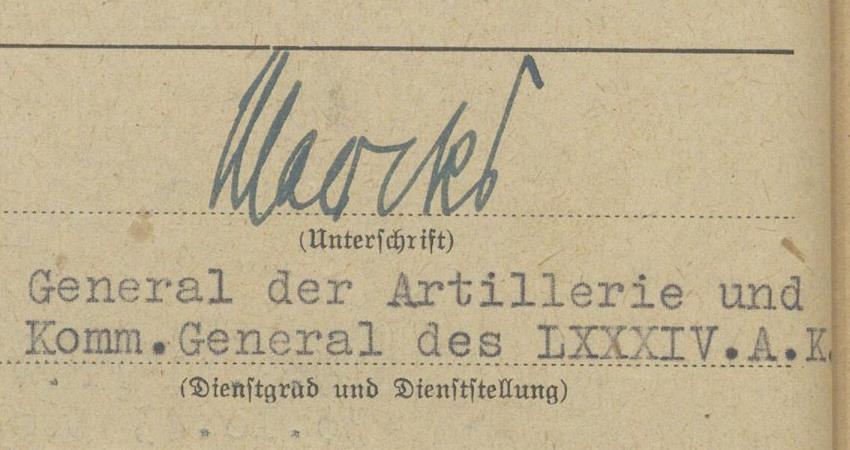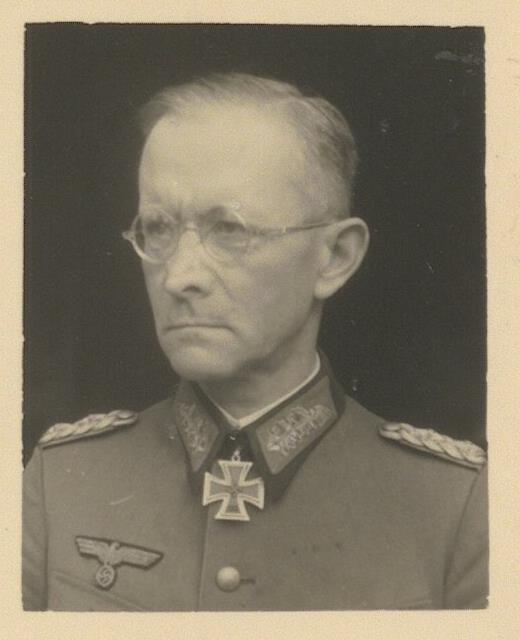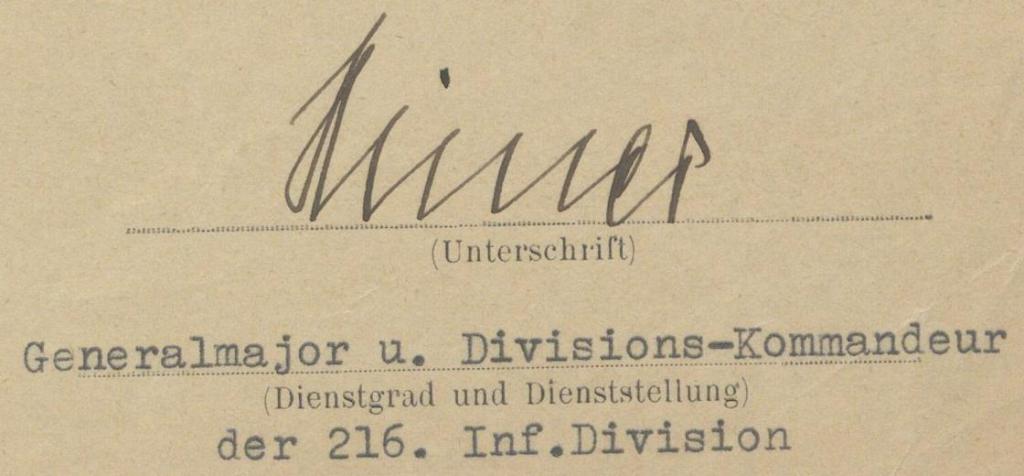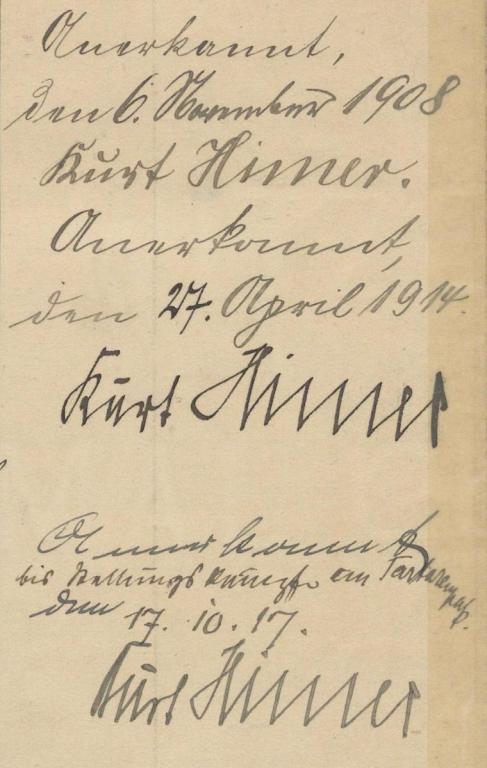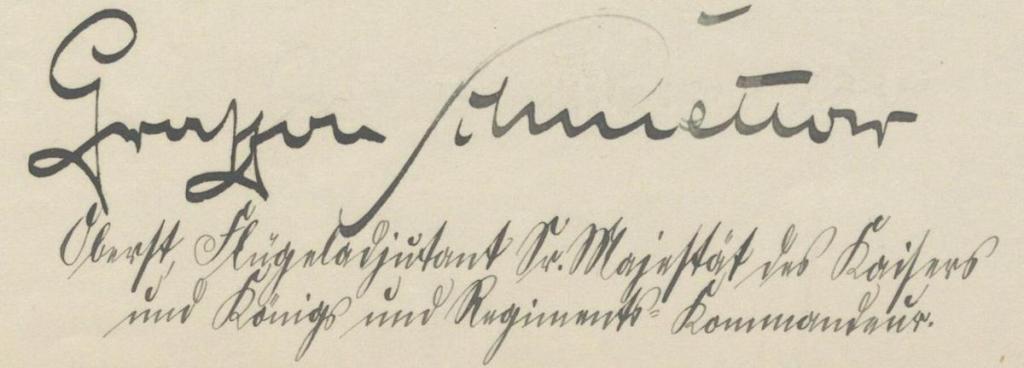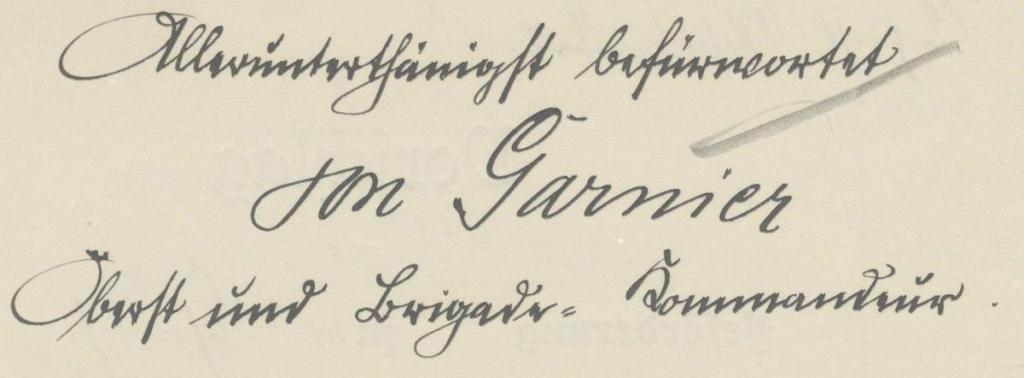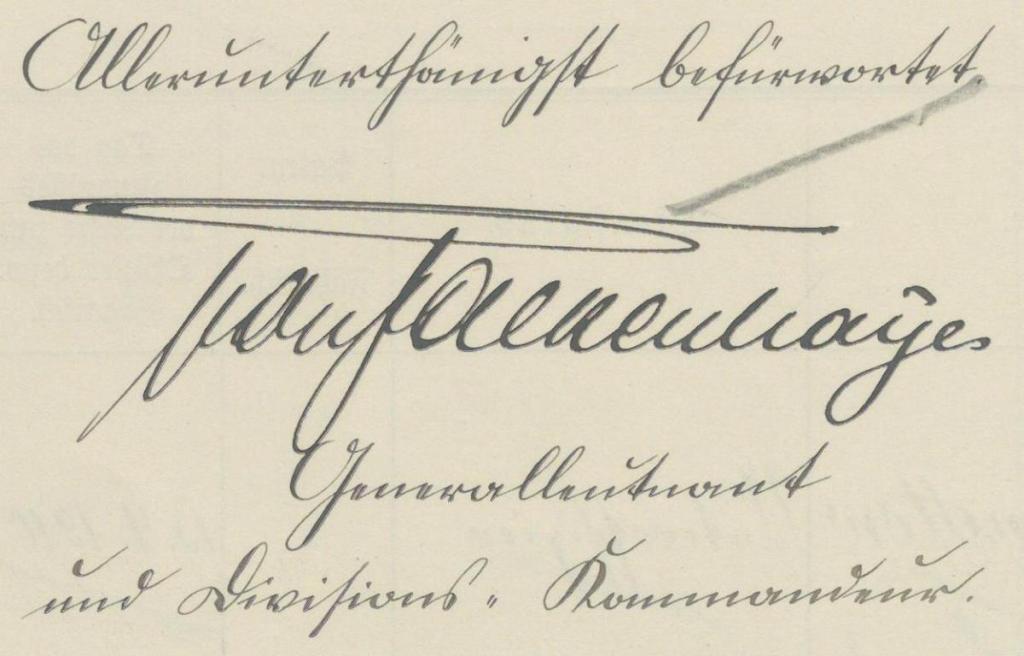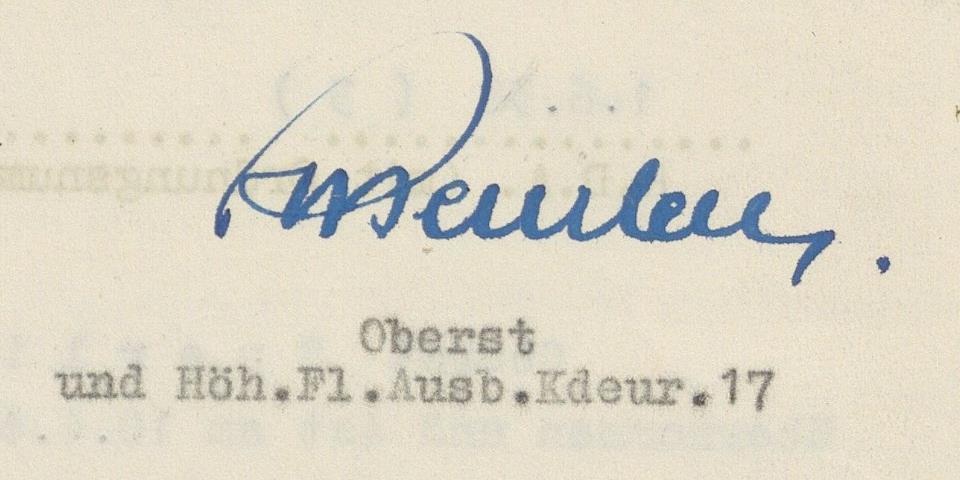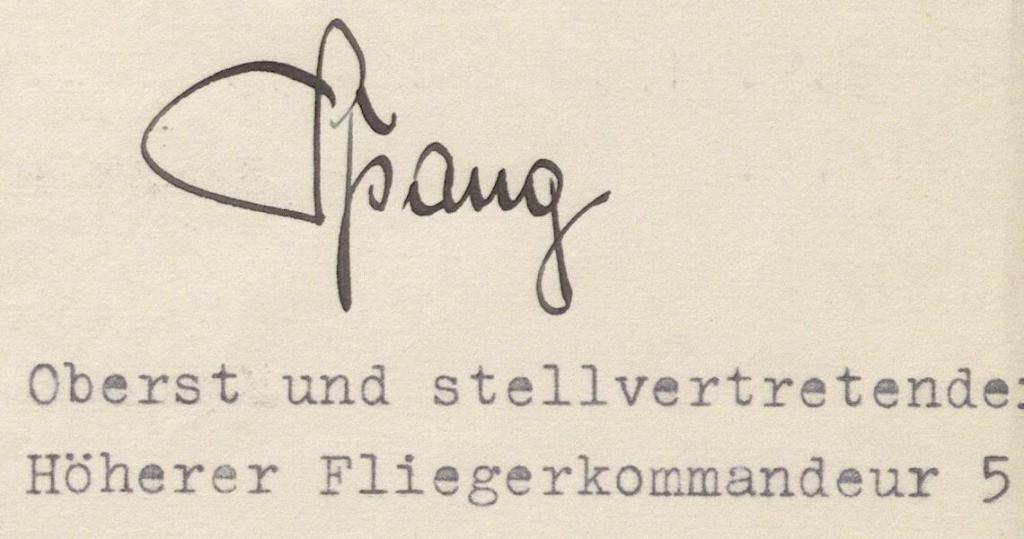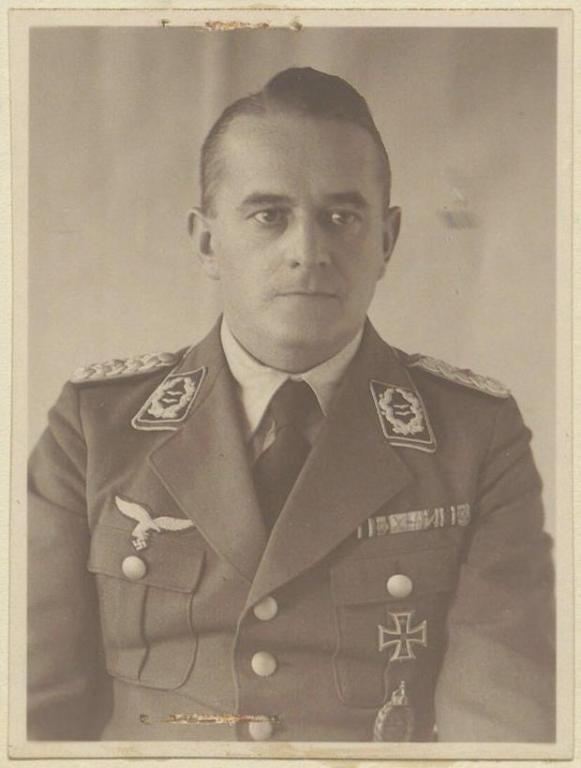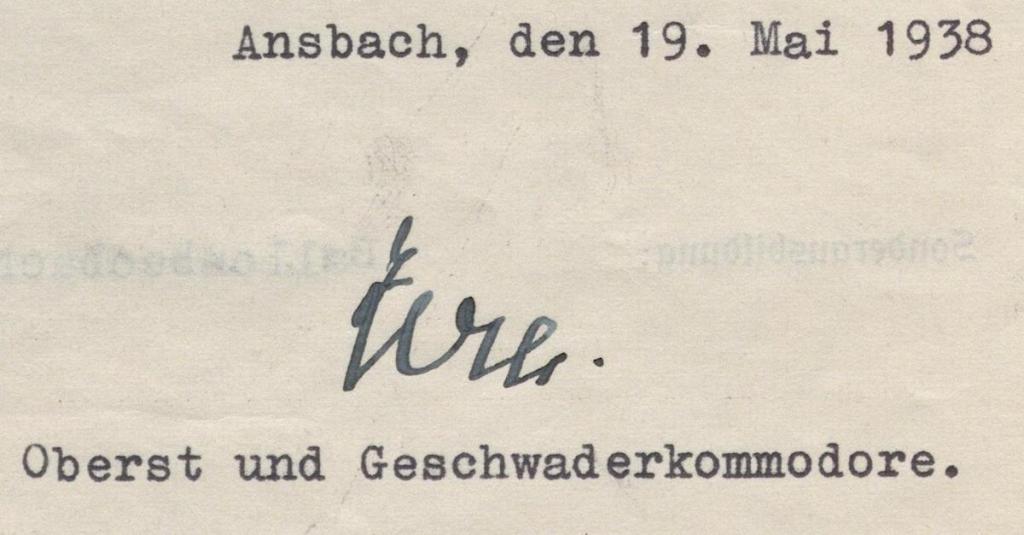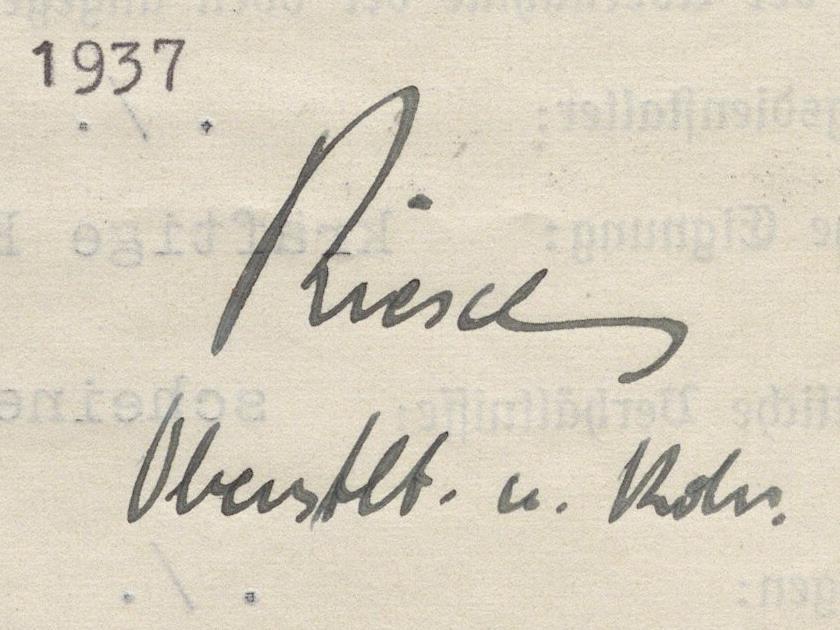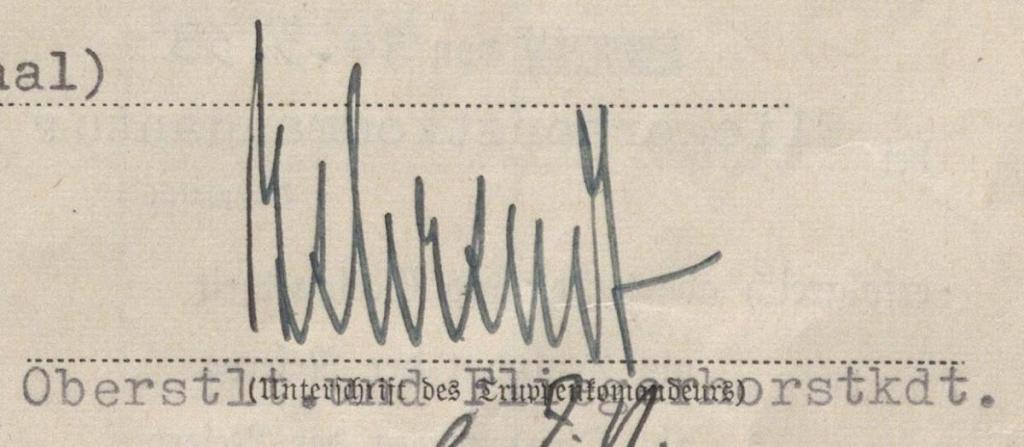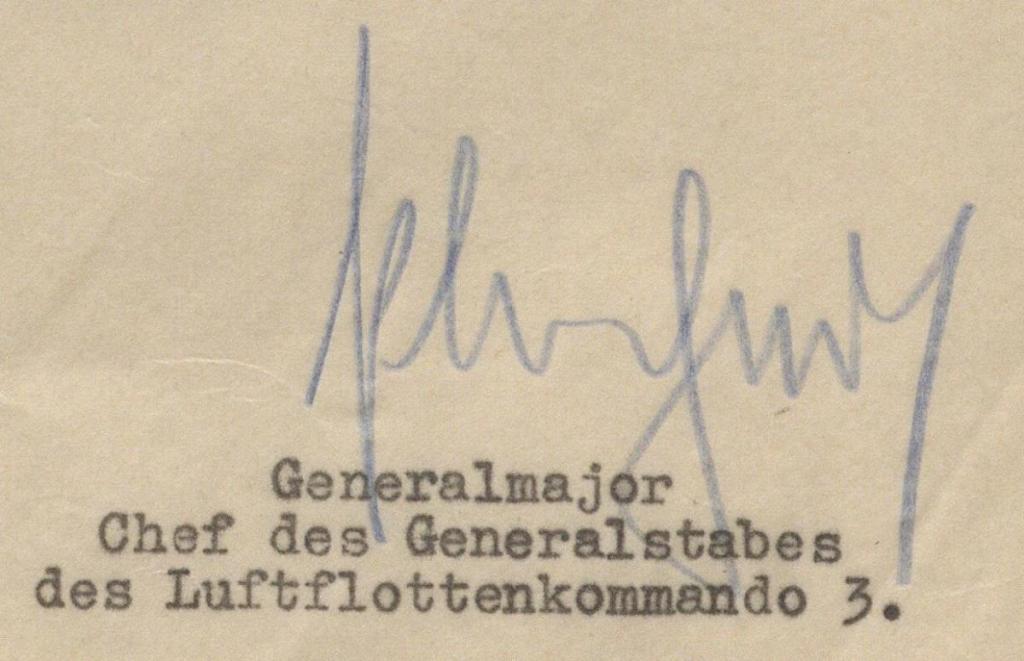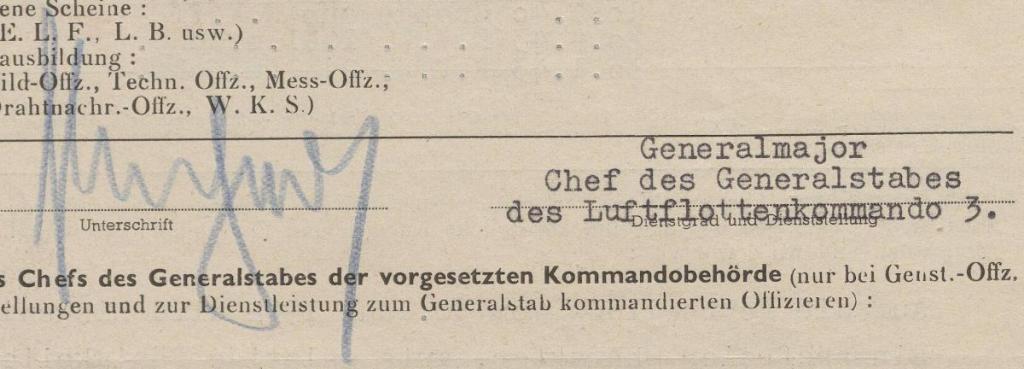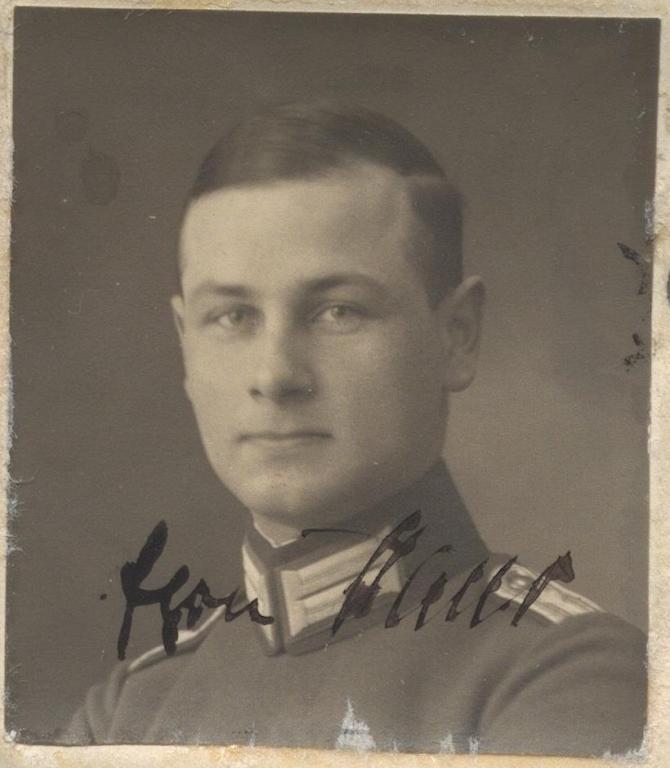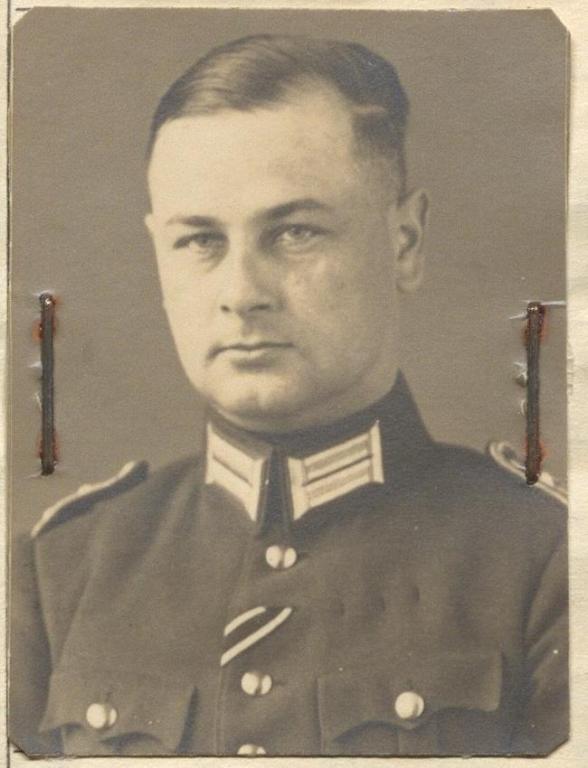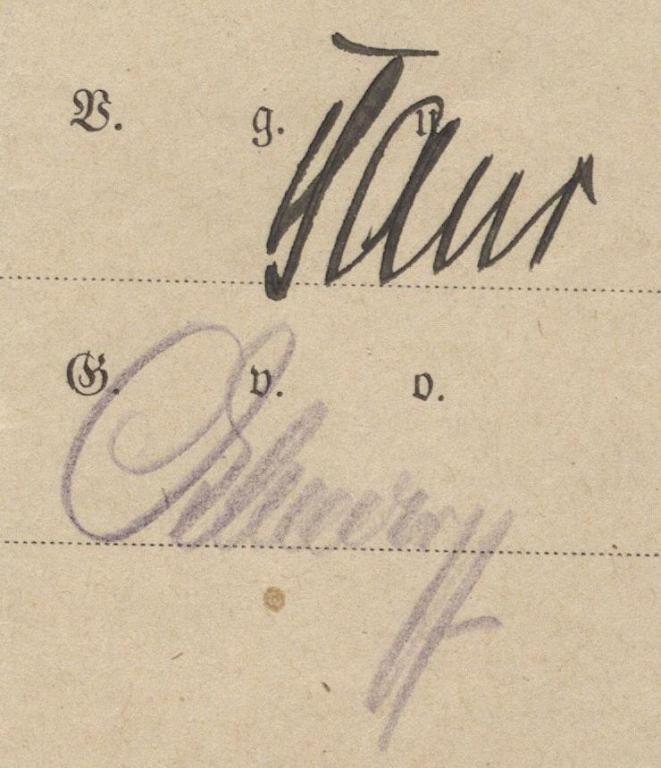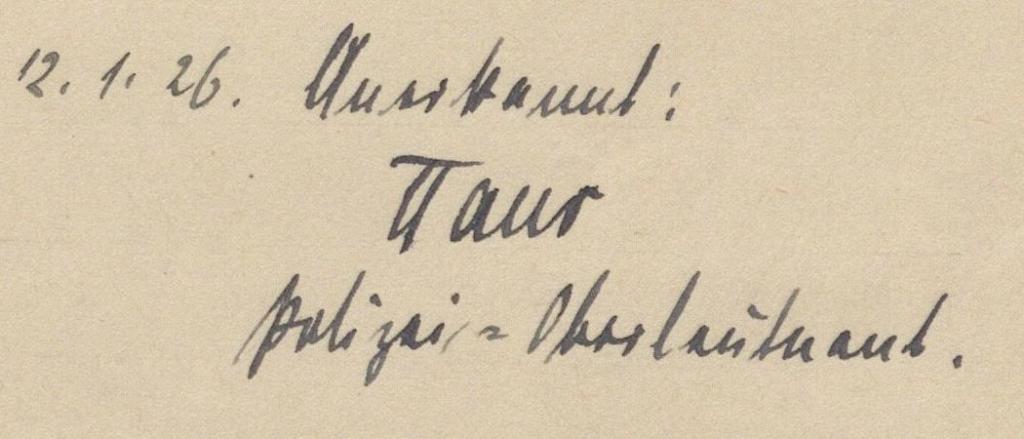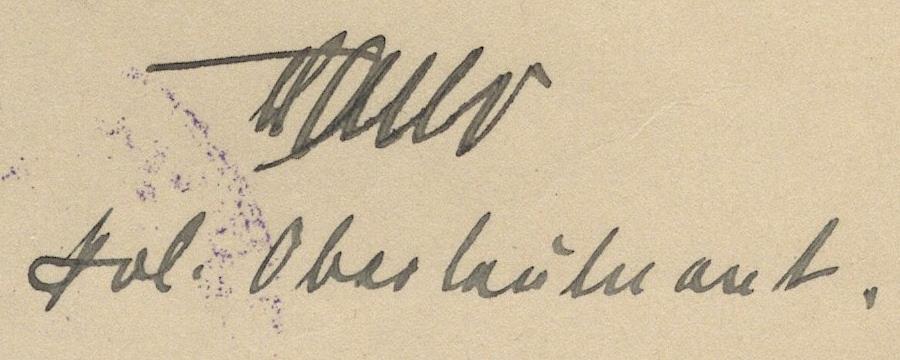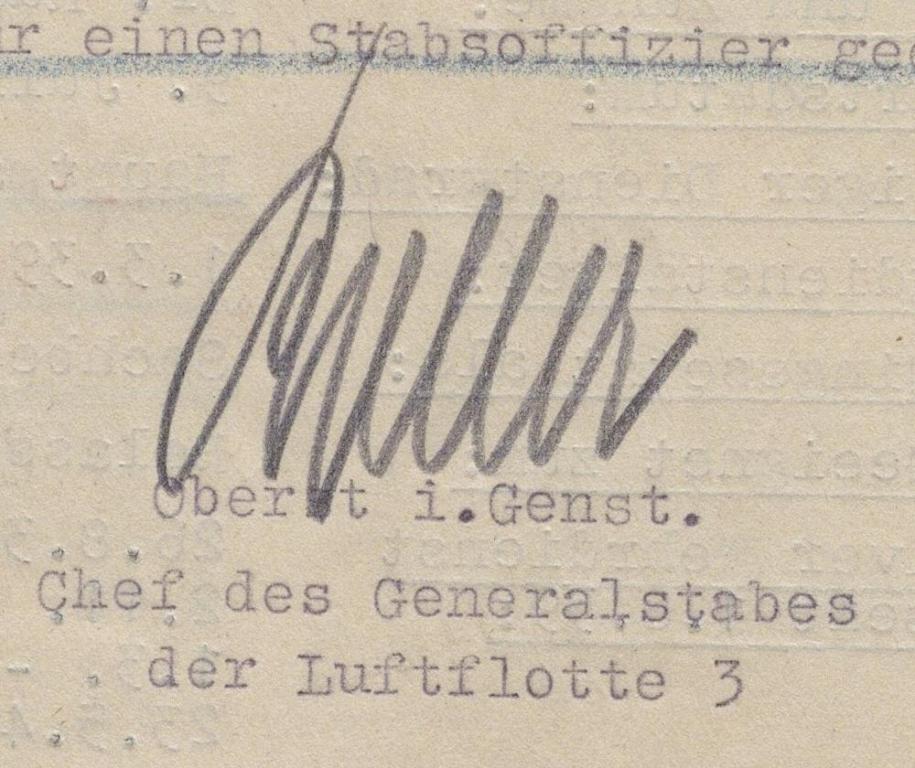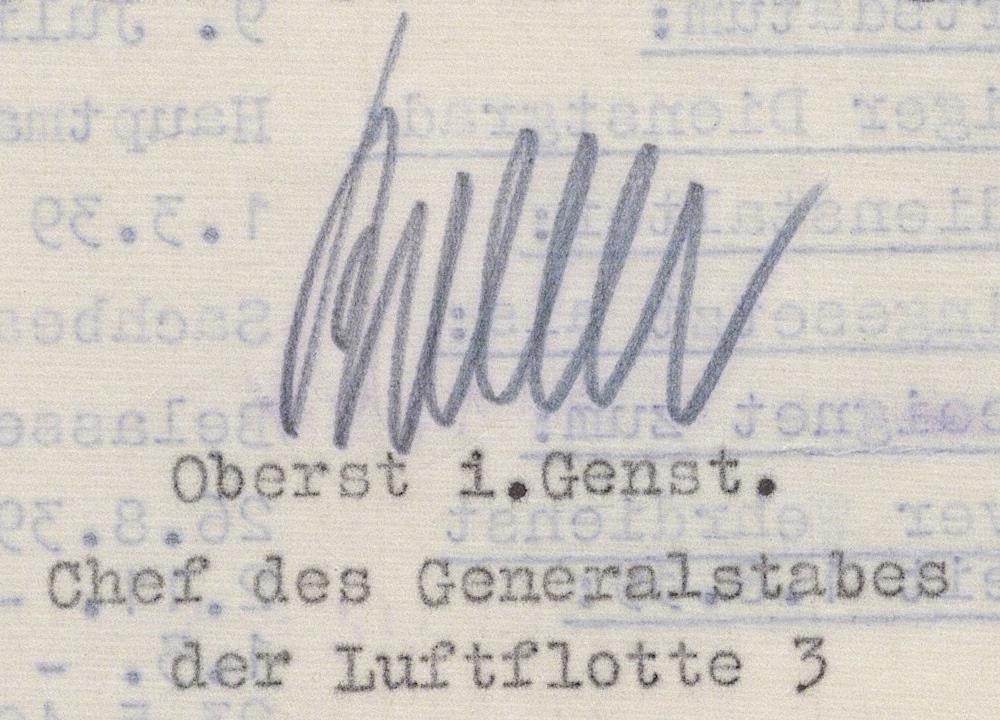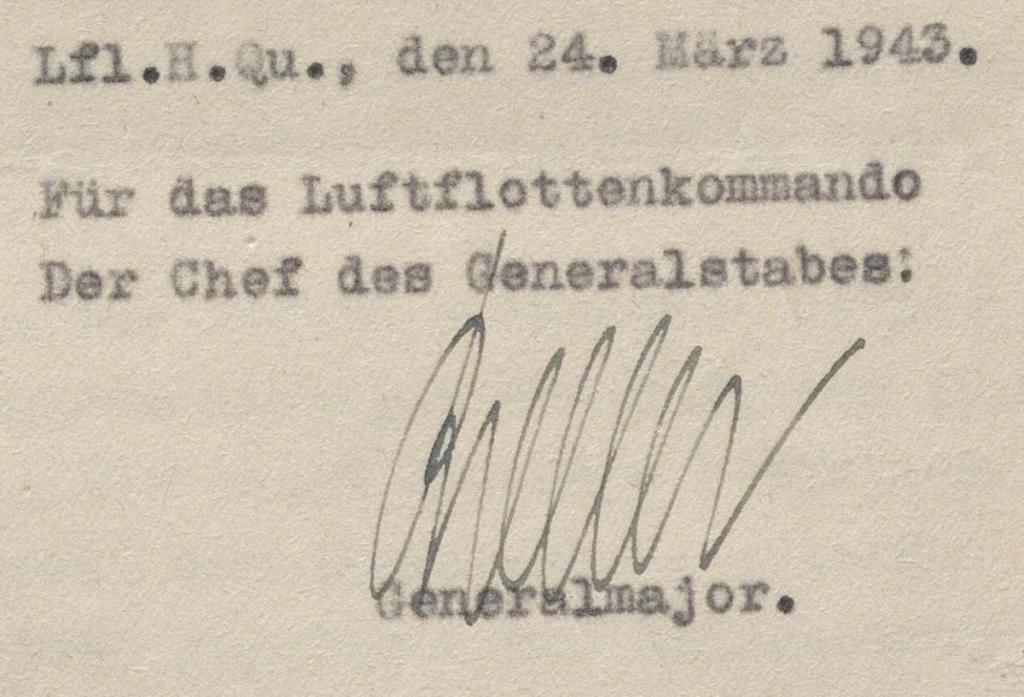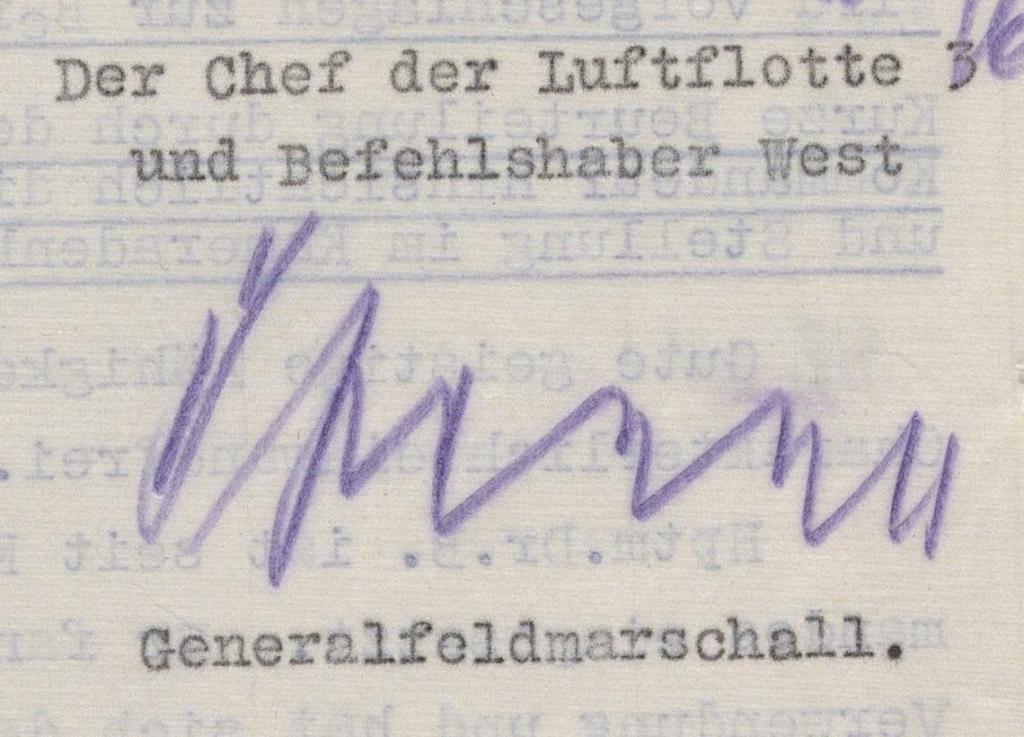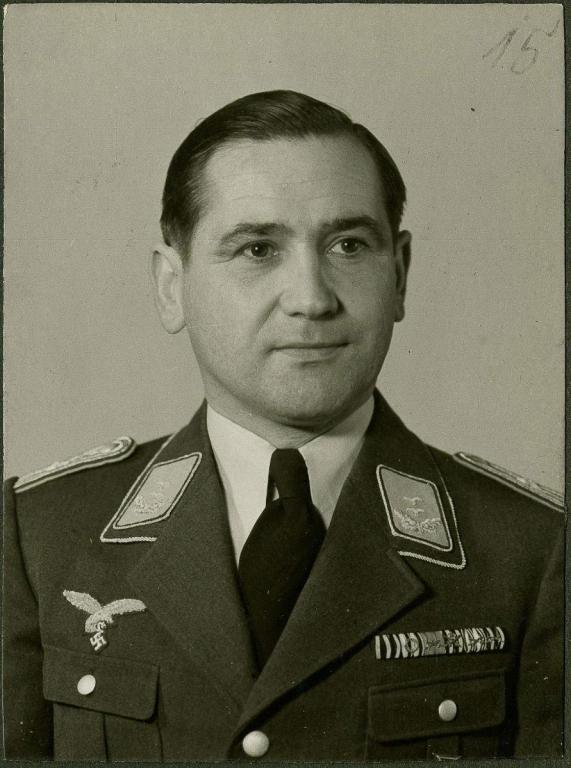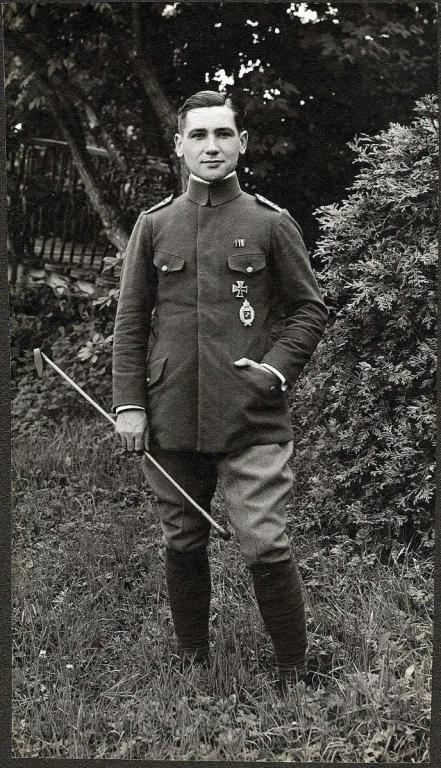-
Posts
4,908 -
Joined
-
Last visited
-
Days Won
97
Content Type
Profiles
Forums
Blogs
Gallery
Events
Store
Everything posted by Dave Danner
-
Marcks, Erich * 6. Juni 1891 in Schöneberg bei Berlin † 12. Juni 1944 bei Hébécrevon, Saint-Lô, Normandie (gefallen beim Fliegerangriff) Highest rank reached: General der Artillerie Chef des Generalstabs des VIII. Armeekorps Chef des Generalstabs der 18. Armee Kommandeur der 101. leichten Infanterie-Division Kommandeur der 337. Infanterie-Division Kommandierender General des LXVI. Reservekorps Kommandierender General des LXXXVII. Armeekorps Kommandierender General des LXXXIV. Armeekorps Ritterkreuz des Eisernen Kreuzes mit Eichenlaub https://en.wikipedia.org/wiki/Erich_Marcks https://de.wikipedia.org/wiki/Erich_Marcks_(General) https://www.lexikon-der-wehrmacht.de/Personenregister/M/MarcksE.htm
-
Himer, Kurt * 21. Dezember 1888 in Cottbus † 4. April 1942 im Hospital in Simferopol, UdSSR Highest rank reached: Generalleutnant Kommandeur der 216. Infanterie-Division Bevollmächtigter General der deutschen Wehrmacht in Ungarn Kommandeur der der 46. Infanterie-Division https://de.wikipedia.org/wiki/Kurt_Himer A WW2 wartime example, and a few earlier examples.
-
Schmettow, Eberhard Graf von * 17. September 1861 in Halberstadt † 31. Januar 1935 in Görlitz Highest rank reached: Generalleutnant Kommandeur das Leib-Kürassier-Regiment „Großer Kurfürst“ (Schlesisches) Nr. 1 Kommandeur der 5. Kavallerie-Brigade Kommandeur der Leib-Husaren-Brigade Kommandeur der 9. Kavallerie-Division Kommandeur der 8. Kavallerie-Division Kommandeur der 195. Infanterie-Division Kommandeur der 3. Kavallerie-Division Kommandeur des Kavallerie-Korps Schmettow Kommandierender General des Generalkommandos z.b.V. 65 Orden Pour le Mérite mit Eichenlaub (PLM-EL) https://en.wikipedia.org/wiki/Eberhard_Graf_von_Schmettow https://de.wikipedia.org/wiki/Eberhard_von_Schmettow http://prussianmachine.com/akb/schmettoweb.htm
-

imperial 1914-1918 Garnier, Otto von
Dave Danner posted a topic in Germany: All Eras: Signature Database
Garnier, Otto Wladislaus Eduard Konstantin von * 1. Mai 1859 in Neustadt in Oberschlesien † 17. Juni 1947 in Baden-Baden Highest rank reached: General der Kavallerie Kommandeur des 2. Garde-Ulanen-Regiments Chef des Generalstabs des VI. Armeekorps Kommandeur der 11. Kavallerie-Brigade Inspekteur der 2. Kavallerie-Inspektion Kommandeur der 4. Kavallerie-Division Höherer Kavallerie-Kommandeur Nr. 6 Führer des V. Reservekorps Kommandierender General des VII. Reservekorps Orden Pour le Mérite (PLM) https://en.wikipedia.org/wiki/Otto_von_Garnier https://de.wikipedia.org/wiki/Otto_von_Garnier_(General,_1859) -

heer Müller, Erich
Dave Danner replied to Dave Danner's topic in Germany: All Eras: Signature Database
-

imperial 1914-1918 Falkenhayn, Eugen von
Dave Danner replied to Dave Danner's topic in Germany: All Eras: Signature Database
-
Scheurlen, Heinz * 24. April 1895 in Stuttgart, Königreich Württemberg † 27. April 1971 in Stuttgart, Baden-Württemberg Highest rank reached: Generalleutnant Kommandeur der Fliegerwaffenschule (See) und Seefliegerhorstkommandant Bug auf Rügen Höherer Fliegerausbildungskommandeur 17 Höherer Fliegerausbildungskommandeur 3 Höherer Kommandeur der Flugzeugführerschulen C beim Stabe des Luftflotten-Kommandos 1 Kommandant der erweiteren Ortsfeldkommandantur Athen Militärbefehlshaber Griechenland Wehrmachtbefehlshaber Mazedonien https://de.wikipedia.org/wiki/Heinz_Scheurlen
-

luftwaffe Hoffmann, Gerhard
Dave Danner replied to Dave Danner's topic in Germany: All Eras: Signature Database
-

luftwaffe Udet, Ernst
Dave Danner replied to tompress's topic in Germany: All Eras: Signature Database
-
Spang, Willibald * 25. März 1886 in Mergentheim, Königreich Württemberg † 28. September 1978 in Hamburg Highest rank reached: Generalleutnant Kommandeur der III. Gruppe des Kampfgeschwaders 155 und Kommandant des Fliegerhorstes Schwäbisch Hall Kommodore des Kampfgeschwaders 255 Inspizient für Blindflug und Navigation im RLM Chef des Reichs-Wetterdienstes Nahkampfführer des IV. Fliegerkorps Kommandeur der 7. Luftwaffen-Felddivision Kommandeur der 15. Luftwaffen-Felddivision beim Chef des Militär-Kraftfahrwesens im OKW https://de.wikipedia.org/wiki/Willibald_Spang
-
Zoch, Philipp * 2. Januar 1892 in Aachen † 24. Mai 1949 in Wittlich Highest rank reached: Generalleutnant Kommandeur der Kampffliegerschule Faßberg und Fliegerhorstkommandant Faßberg Kommandeur der Kampffliegerschule Tutow und Fliegerhorstkommandant Tutow Kommodore des Kampfgeschwaders 355 bzw. Kampfgeschwaders 53 Kommandeur der Luftkriegsschule 3 Wildpark-Werder Koluft bei der 3. Armee, 16. Armee, Heeresgruppe C, Heeresgruppe B, Heeresgruppe Mitte Höherer Kommandeur der Aufklärungsflieger Beauftragter für Kraftfahrwesen in Württemberg und Baden https://de.wikipedia.org/wiki/Philipp_Zoch https://www.lexikon-der-wehrmacht.de/Personenregister/Z/ZochPhilipp.htm
-

Luftwaffe Riesch, Eduard
Dave Danner replied to Odulf's topic in Germany: All Eras: Signature Database
-
Behrendt, Hans * 28. Juli 1892 in Breslau, Königreich Preußen † 24. Juli 1959 in Schulenburg an der Leine, Niedersachsen Highest rank reached: Generalleutnant Kommandeur der III. Gruppe des Kampfgeschwaders 355 und Kommandant des Fliegerhorsts Giebelstadt Kommodore des Kampfgeschwaders 27 Kommandeur der Großen Kampffliegerschule II Inspizient des Personals der Luftwaffe Chef des Luftwaffen-Wehramtes https://de.wikipedia.org/wiki/Hans_Behrendt_(Offizier) https://www.lexikon-der-wehrmacht.de/Personenregister/B/BehrendtHans.htm
-
Plocher, Hermann * 5. Januar 1901 in Stuttgart, Königreich Württemberg † 8. Dezember 1980 in Murrhardt, Baden-Württemberg Highest rank reached: Generalleutnant (Luftwaffe) / Generalmajor (Bundeswehr) Chef des Generalstabes der „Legion Condor“ Chef der II. Abteilung des Generalstabes der Luftwaffe Chef des Generalstabes des V. Fliegerkorps Chef des Generalstabes des Luftwaffenkommandos Ost Führer der 1. Fliegerdivision Kommandeur der 19. Luftwaffen-Felddivision Kommandeur der 4. Fliegerdivision Chef des Generalstabes der Luftflotte 3 Kommandeur der 6. Fallschirmjäger-Division beim Kommando der Luftwaffen-Bodenorganisation Süd Stellvertreter des Inspekteurs und Chef des Führungsstabes der Luftwaffe Führer der Luftverteidigungsdivision 2 Inspekteur des Truppendienstes der Luftwaffe stellv. Kommandierender General des Luftwaffenkommandos Süd Ritterkreuz des Eisernen Kreuzes - 9.12.1943 Deutsches Kreuz in Gold - 20.4.1942 Eichenlaub zum Ritterkreuz des Eisernen Kreuzes - 8.5.1945 (not recognized by WASt) https://en.wikipedia.org/wiki/Hermann_Plocher https://de.wikipedia.org/wiki/Hermann_Plocher https://www.lexikon-der-wehrmacht.de/Personenregister/P/PlocherH.htm
-

luftwaffe Baur, Egon
Dave Danner replied to hucks216's topic in Germany: All Eras: Signature Database
-
Koller, Karl * 22 Februar 1898 in Glonn, Bayern † 22. Dezember 1951 ebenda Highest rank reached: General der Flieger Chef des Generalstabes der Luftflotte 3 Chef des Luftwaffenführungsstabes Chef des Generalstabes der Luftwaffe Ritterkreuz des Eisernen Kreuzes - 10.4.1942 Deutsches Kreuz in Gold - 7.2.1944 https://en.wikipedia.org/wiki/Karl_Koller_(general) https://de.wikipedia.org/wiki/Karl_Koller_(General) The first two examples are from different copies of the same document, a promotion recommendation for a reserve officer. The third is from a KVK1X Vorschlag.
-

Luftwaffe Sperrle, Hugo
Dave Danner replied to hucks216's topic in Germany: All Eras: Signature Database
-

luftwaffe Dessloch, Otto
Dave Danner replied to tompress's topic in Germany: All Eras: Signature Database
-
Württemberg, Albrecht Maria Alexander Philipp Joseph Herzog von * 23. Dezember 1865 in Wien † 29. Oktober 1939 in Schloß Altshausen Highest rank reached: Generalfeldmarschall xx.09.1896 Kommandeur der 4. Garde-Kavallerie-Brigade 14.09.1900 Kommandeur der 51. (Königl. Württemb.) Infanterie-Brigade 13.04.1901 Kommandeur der 26. (Königl. Württemb.) Division 22.09.1906 Kommandierender General des XI. Armeekorps 25.02.1908 Kommandierender General des XIII. (Königl. Württemb.) Armeekorps 01.05.1913 Generalinspekteur der VI. Armee-Inspektion 02.08.1914 Oberbefehlshaber der 4. Armee 07.03.1917 Oberbefehlshaber der Heeresgruppe „Herzog Albrecht“ Orden Pour le Mérite mit Eichenlaub Königlich Württembergischer Militärverdienstorden, Großkreuz Königlich Bayerischer Militär-Max-Joseph-Orden, Großkreuz Königlich Sächsischer Militär-St. Heinrichs-Orden, Komturkreuz 2. Klasse Großherzoglich Badischer Militär-Karl-Friedrich-Verdienstorden, Großkreuz https://en.wikipedia.org/wiki/Albrecht,_Duke_of_Württemberg https://de.wikipedia.org/wiki/Albrecht_Herzog_von_Württemberg


